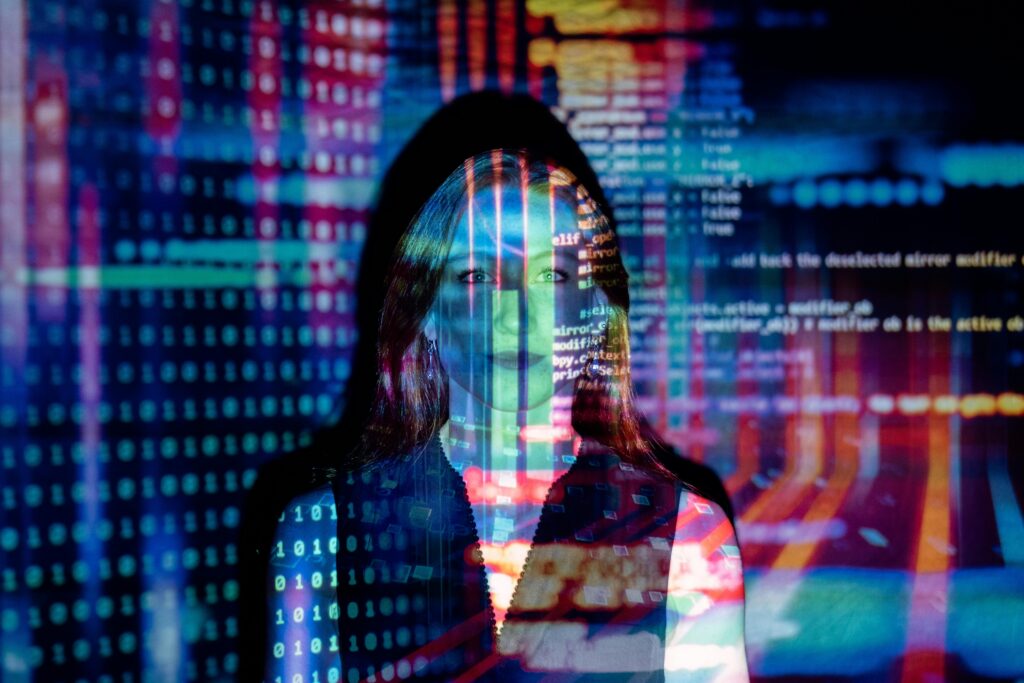Au Pairs, ID Checks, and Tech Magic: Why Verification Matters in the 21st Century

Discover how biometric ID verification is transforming the au pair industry. Learn why tech advancements in identity checks ensure trust, safety, and transparency in the 21st century.
1. The Au Pair Adventure: A Cultural Exchange Like No Other
Becoming or hosting an au pair is like opening a new chapter in a storybook—full of cultural exchanges, mutual learning, and lifelong friendships. But let’s face it, before you invite someone to live in your home or travel halfway across the world to join a family, there’s one big question: Who are these people?
In today’s world, trust is everything. With the rise of globalisation and the ease of connecting across borders, it’s never been more important to ensure peace of mind before embarking on the au pair journey. This is where ID verification enters as the ultimate safety measure—equipped with biometric scanners and NFC technology, no less! It’s not just about ticking a box; it’s about creating a foundation of trust and security for everyone involved.
Gone are the days when a handshake sealed the deal. We at Haus Au Pair know that in today’s fast-paced world, identity verification is the modern handshake—a digital one that says, “Yes, I’m real, and I’m not here to steal your Wi-Fi or your cat.”
2. Why ID Verification is More Than Just a Formality
Picture this: You’re hosting someone who claims to be a language enthusiast from Spain, only to find out they’re actually a drummer from Belgium who’s never heard of paella. Sounds like a Netflix comedy, right? But in real life, such mix-ups can lead to more drama than you signed up for.
ID verification isn’t just about avoiding awkward situations; it’s a safety net. It ensures that everyone—whether au pair or host family—is exactly who they claim to be. For au pairs, it means proving they’re trustworthy, reliable, and enthusiastic about cultural exchange. For host families, it’s about showing they’re welcoming, respectful, and genuinely interested in offering a safe environment.
We believe this isn’t a one-way street. Both sides need to feel secure and valued, making ID checks a crucial step in building a healthy, respectful relationship. And trust us, in the world of au pairs, trust is the secret ingredient to a harmonious household.
3. Biometric Technology: The Cool Kid on the Block
Let’s talk tech—because nothing says “21st century” quite like biometric verification. Think facial recognition, NFC-enabled ID checks, and fingerprint scans. It’s James Bond-level cool but used for something way more wholesome: ensuring safety in cultural exchange programs.
Biometric ID verification isn’t just faster; it’s smarter. Unlike traditional methods that rely on documents (which can be forged), biometric tech analyses unique traits like facial features. It’s like having your own personal Sherlock Holmes but without the hat and pipe.
For us at Haus Au Pair, this means a seamless verification process. No more endless back-and-forth emails or blurry passport scans. Just quick, secure, and reliable checks that get you one step closer to your adventure.
4. Safeguarding Against Online Scams: Why It’s More Important Than Ever
Now more than ever, young people are being scammed online by fake accounts on social media platforms like Facebook. Fraudulent profiles pretending to be previous au pairs or host family agencies are luring people into scams, stealing anywhere from $500 to $2,500—or even more.
These scams don’t just hurt your wallet; they damage trust in the au pair system. At Haus Au Pair, we’re determined to put proper structures in place to safeguard those with good intentions. Scammers should never deter young people from embracing cultural exchange, nor should they keep families from finding the childcare they genuinely need.
By using biometric ID verification, we aim to connect the right au pairs to the right families—authentic, trustworthy matches that protect everyone involved.
5. The Marriage of Tradition and Innovation
Au pairing has been around for decades, but it’s high time we brought it into the digital age. The concept of cultural exchange remains timeless, but the methods need an upgrade. Technology, like biometric ID checks, bridges this gap beautifully.
We love the idea of combining the warmth of a handwritten welcome letter with the efficiency of next-gen tech. By blending tradition with innovation, we create a safer, more transparent experience for everyone involved.
This approach doesn’t just protect individuals; it elevates the entire au pair industry. By prioritising security and trust, we ensure cultural exchange remains meaningful and enriching, not risky or exploitative.
6. Why Trust is the Currency of Au Pairs and Host Families
You wouldn’t let a stranger borrow your car without a driver’s licence, so why would you skip ID checks when inviting someone into your home? Trust is the currency that makes au pairing work. Without it, even the best intentions can crumble like a poorly made soufflé.
At Haus Au Pair, we view ID verification as the foundation of trust. It’s like a safety deposit box for your peace of mind. For host families, it confirms they’re welcoming someone genuine and dependable. For au pairs, it assures them they’re stepping into a safe, supportive environment.
This mutual trust creates a ripple effect. It fosters open communication, reduces misunderstandings, and lays the groundwork for a successful cultural exchange.
7. How Credas Technologies Helps Us Raise the Bar
Let’s give credit where it’s due: Credas Technologies is revolutionising identity verification. By using UK Government-certified biometric systems, they’ve set a gold standard for ID checks in the au pair industry.
We’ve partnered with Credas because their technology isn’t just effective; it’s user-friendly. Whether you’re tech-savvy or still figuring out how to unmute on Zoom, Credas makes the process smooth and efficient. That’s a win for everyone involved.
We’re proud to offer ID verification powered by Credas. It’s not just a service; it’s a game-changer that lets au pairs and host families embark on their journeys with confidence and peace of mind.
8. Why Privacy and Security Are Non-Negotiable
In an era where data breaches make headlines every week, privacy and security are more crucial than ever. Biometric ID verification addresses these concerns head-on. It’s designed to be secure, tamper-proof, and compliant with strict data protection laws.
At Haus Au Pair, we take these responsibilities seriously. We know our clients deserve to know their personal information is safe. With systems like those offered by Credas, you can rest assured that your data isn’t going anywhere it shouldn’t.
So, while you’re busy learning about fondue in Switzerland or Flamenco in Spain, you can trust us and the tech to keep your information safe.
9. How ID Checks Prevent Exploitation
Let’s address the elephant in the room: exploitation. Unfortunately, not all au pair experiences are sunshine and rainbows. In some cases, lack of proper verification has led to serious issues, from unfair treatment to outright abuse.
We believe ID checks are a powerful tool in combating this. By ensuring transparency and accountability, we reduce the likelihood of exploitation. Host families know they’re working with genuine, vetted au pairs, and au pairs can trust they’re entering a safe, respectful environment.
It’s not just about following the rules; it’s about creating a culture of respect and fairness.
10. The Future of Au Pairing: Safer, Smarter, and More Connected
As we look to the future, one thing is clear: the au pair industry is evolving. Technology like biometric ID verification will play an increasingly central role in shaping this evolution.
We’re proud to lead the charge, proving that safety and innovation can go hand in hand. By prioritising trust, transparency, and technology, we’re setting a new standard for au pairing in the 21st century.
Here’s to a future where cultural exchange is safer, smarter, and more connected than ever. Because at the end of the day, it’s not just about crossing borders; it’s about building bridges.





Responses